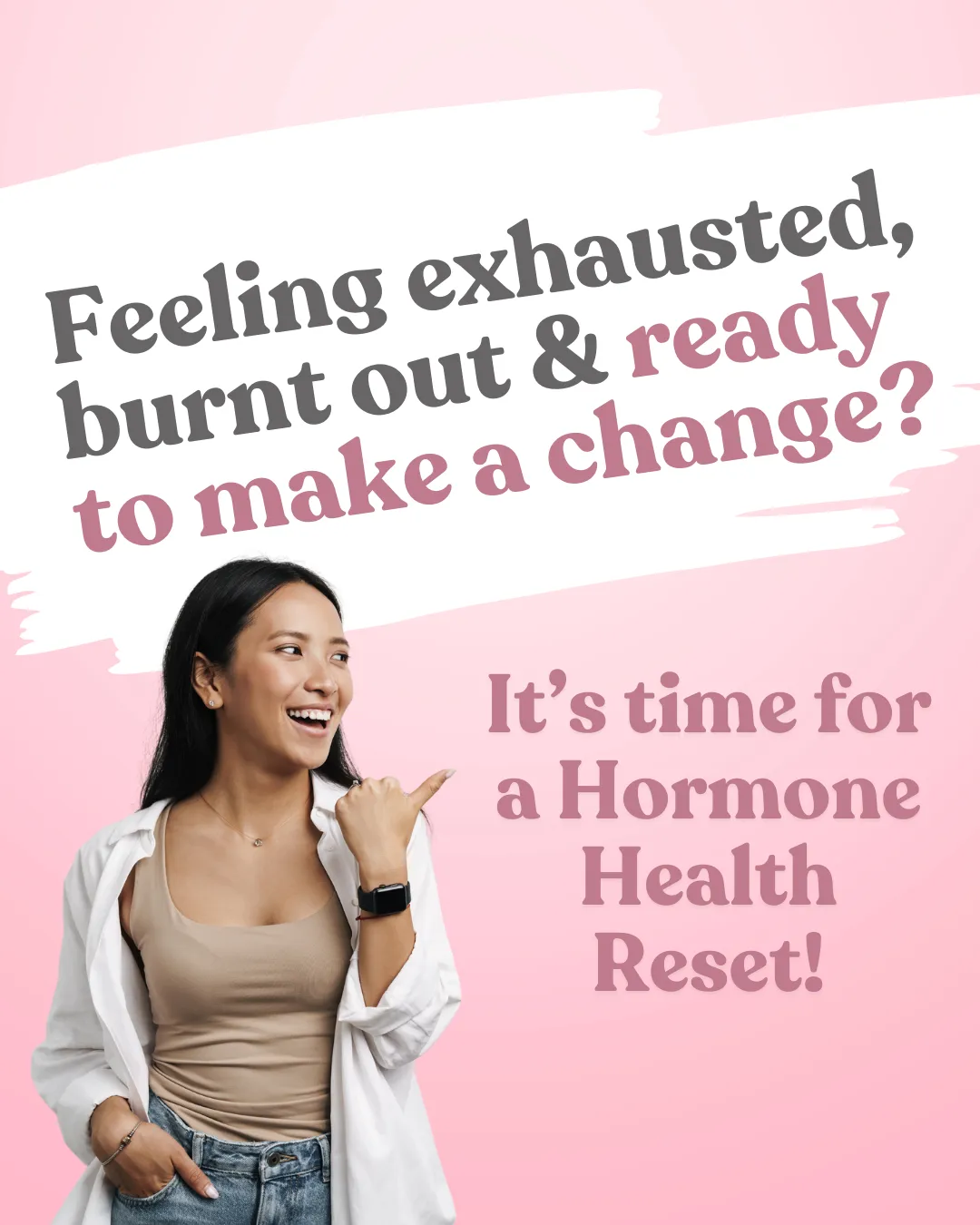Inspiration, Insights,
and Ideas at Your Fingertips

10 Step Hormone Reset
10 Step Hormone Reset
If you’ve been feeling tired, moody, and stuck in a cycle of stubborn weight gain, it’s time to stop blaming yourself. The root cause often lies in your hormones—and there’s a way to reset them while reclaiming your energy and balance. These 10 steps will guide you with tips and tools to make each step as easy and manageable as possible.
Understanding Hormone Imbalances
Hormone imbalances can happen for a number of reasons:
Chronic stress is a big one—it raises cortisol levels, which can mess with other hormones like estrogen and thyroid hormones, leading to tiredness, mood swings, and weight gain
A poor diet full of processed foods and sugar can also throw things off, affecting insulin and hormone production
Environmental toxins, like those found in plastic and cosmetics, can mimic estrogen and mess with your hormones
Sleep deprivation is another culprit, as it messes with cortisol levels and disrupts hormones that control hunger and metabolism
Underlying health issues like PCOS or thyroid problems, as well as life changes like menopause, can also cause hormone imbalances
Even medications like birth control can play a role
Understanding what’s causing your imbalance is the first step in resetting your hormones and getting back to feeling your best.
10 Steps to Reset Your Hormones
Step 1: Detox Your Diet
Start by cutting out inflammatory foods like sugar, processed snacks, and alcohol, and replace them with whole, nutrient-dense options. Focus on colorful vegetables, lean proteins, healthy fats, and fiber-rich foods to support detoxification and hormone health. Use tools like Whisk to plan meals that align with your goals.
Step 2: Balance Your Breakfast
Eat a protein-rich meal in the morning to stabilize blood sugar and support hormone production. Include foods like eggs, Greek yogurt, or a protein smoothie with added fiber. Target 30-35 grams to start your day.
Step 3: Fix Your Sleep Hygiene
Quality sleep is essential for balancing hormones. Aim for 7-9 hours of uninterrupted sleep each night. Create a sleep routine by limiting screen time before bed, keeping a consistent sleep schedule, and optimizing your sleep environment. Use apps like SleepCycle to track your progress and optimize your schedule for better sleep habits.
Step 4: Stress Less with Cortisol Care
Chronic stress can wreak havoc on your hormones. Incorporate mindfulness practices like meditation, deep breathing, or yoga to lower cortisol levels. Apps like Headspace and Calm provide guided meditations and breathwork exercises that are easy to incorporate into daily life.
Step 5: Move Smart, Not More
Focus on strength training and low-impact workouts to support muscle growth and hormonal health. Overtraining can increase cortisol levels, so aim for balanced movement. It doesn’t need to be complex as consistency will be the best goal.
Step 6: Heal Your Gut, Heal Your Hormones
Your gut plays a huge role in hormone regulation. Include probiotics, fiber, and gut-healing foods like fermented vegetables, bone broth, and flaxseeds.
Step 7: Hydrate Like You Mean It
Staying hydrated is one of the simplest but most effective ways to support hormone balance. Aim for at least half your body weight in ounces of water daily.
Step 8: Track and Optimize Your Hormones
Understanding how your hormones fluctuate can help you align your habits to support balance. Use apps like FLO to track your cycle and gain deeper insights into hormonal patterns and their impact on your body and mind.
Step 9: Build Habits That Stick
Consistency is the key to success. Small, daily actions lead to big changes over time. Start by choosing one or two habits that align with your health goals, such as eating a protein-rich breakfast or incorporating a 10-minute meditation into your routine. Set realistic expectations and focus on progress, not perfection.
Step 10: Make It Manageable
Life can feel overwhelming, but making your hormone reset plan manageable is all about working smarter, not harder. Prioritize strategies that fit seamlessly into your daily routine. For example, instead of aiming for an hour-long workout, take a 20-minute walk after dinner. Or, if meal prepping for the week feels impossible, start with preparing just one or two meals ahead of time. Use time-blocking to carve out small windows in your schedule for self-care or health-focused tasks. Ask yourself, what can I do with at least 80% confidence that I will get it done!!
Functional Testing for a Personalized Hormone Reset
Functional testing provides valuable insights into the root causes of hormonal imbalances, helping you create a personalized health plan. Here are a few key tests to consider:
Micronutrient Panel: This test evaluates the levels of essential vitamins, minerals, and antioxidants in your body. Identifying deficiencies can help optimize energy production, metabolism, and hormone synthesis. With these insights, you can create a targeted supplementation and dietary plan tailored to your specific needs.
Urine Hormone Testing
Urine hormone testing offers another detailed approach to understanding hormone fluctuations over a 24-hour period. This test provides a comprehensive snapshot of your hormone levels, including metabolites, and is especially useful for evaluating thyroid function, adrenal health, and reproductive hormone imbalances. It’s an effective tool for pinpointing hormone imbalances that could be affecting your mood, metabolism, or energy levels, helping you create a personalized plan for balance and health.Food Sensitivity Testing: This test identifies hidden inflammatory responses to certain foods that may contribute to hormonal imbalances, digestive issues, or skin conditions. Eliminating trigger foods can significantly improve your overall health and hormone regulation.
Resetting your hormones doesn’t have to feel overwhelming. With these 10 steps and tailored functional testing, you can take control of your health and energy in a way that fits your lifestyle.
If you are looking to get started, find solutions, and create a personalized plan with easy-to-follow steps designed specifically for you, book a call today.
https://atomushealth.com/book-now
Let’s make 2025 the year you reclaim your energy and feel like yourself again!
